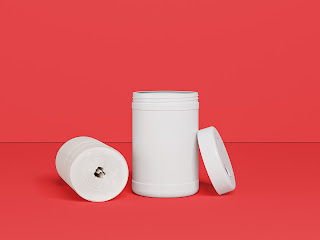The Science Behind Wet Wipes: Unveiling the Raw Materials and Manufacturing Process
Introduction
Wet wipes have become an indispensable part of our daily lives, offering convenience and hygiene in various situations. Whether it's for personal use or surface cleaning, these handy wipes have revolutionized the way we maintain cleanliness and freshness. This article delves into the raw materials and manufacturing process that go into producing a canister of 160ct dry wipes roll, shedding light on the science behind these essential products.
Raw Materials: Spunbond PP+Rayon Blended Substrate Roll
The backbone of any wet wipe is the substrate material. In this case, it's a blend of spunbond polypropylene (PP) and rayon. Spunbond PP is known for its strength and durability, making it an ideal choice for the base material. Rayon, on the other hand, provides absorbency, making it perfect for wiping away moisture and impurities. The blend of these two materials strikes a balance between strength and absorbency, ensuring effective cleaning.
Height, Perforation, and Effective Wipe Size
The substrate roll has a height of 6 inches, and it's perforated every 6-3/4 inches lengthwise. These perforations are strategically placed to provide a convenient and efficient way of tearing off individual wipes. The effective wipe size measures 6 inches in width and 6.65 inches in length, making it a versatile choice for a wide range of applications.
Substrate Thickness: 40GSM
The substrate thickness is measured in grams per square meter (GSM). In this case, the substrate has a thickness of 40GSM. This thickness strikes a balance between strength and flexibility. Thicker substrates are more robust, but they might be less pliable, making them less effective for delicate tasks. The 40GSM thickness ensures that the wipes are sturdy enough to handle most cleaning jobs while remaining flexible.
Canister Details
The canister that houses these wet wipes is a crucial component of the product. It has a height of approximately 7 inches and a diameter of about 4.5 inches (114mm). The canister is made from high-density polyethylene (HDPE), which is known for its strength and resistance to moisture. This choice of material ensures the wipes stay protected and fresh until they are needed.
Lid: Screw Type with a Slotted Opening and Moisture Lock Cap
The lid of the canister plays a significant role in preserving the wipes' moisture content and preventing them from drying out. It is a screw-type lid with a slotted opening, allowing users to pull out individual wipes with ease. The moisture lock cap ensures that the remaining wipes stay moist and ready for use. This design is essential for maintaining the effectiveness of the wet wipes throughout their lifespan.
Conclusion
In conclusion, the production of wet wipes is a carefully orchestrated process that combines various raw materials and engineering to create a convenient and effective product. The blend of spunbond polypropylene and rayon in the substrate, along with its 40GSM thickness, ensures strength, absorbency, and flexibility. The canister, made of HDPE, and the moisture-preserving lid are designed to keep the wipes fresh and ready for use.
Understanding the science and engineering behind wet wipes helps us appreciate their functionality and versatility in our daily lives. Whether used for personal hygiene or cleaning surfaces, these wet wipes are a testament to the innovation and technology that goes into making everyday products that simplify our routines and keep us clean and healthy.




Comments
Post a Comment